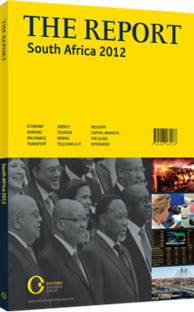A pillar of strength: Domestic demand is likely to keep the steel industry moving forward
Steel has long been a mainstay of South Africa’s industrialised economy and a major export. The country is blessed with large deposits of the basic inputs coking coal and iron ore, as well as a history of accessible electricity, robust domestic demand and significant regional export opportunities, which have helped build the steel market into what it is today. While growth over the next year is relatively assured, the pace at which the sector expands in 2012 may be affected by shaky global economic conditions and higher production costs.
ECONOMIC SIGNIFICANCE: Although the sector’s domestic production (7.62m tonnes in 2010) is modest in comparison with the global giants such as China, steel remains an important ingredient in South Africa’s economic mix, particularly when measured by its impact on job creation, given the problems the country faces in terms of unemployment. According to the South African Iron and Steel Institute (SAISI), every job in the steel industry creates 2.6 jobs elsewhere in the economy. And every R1bn ($122.4m) spent on steel products begets a further R1.6bn ($195.8m) in other economic activity.
Production in 2010 reached 7.62m tonnes, up 1.8% from 2009, SAISI figures show. That output was enough to make South Africa the world’s 21st-largest producer for the year, according to the World Steel Association. It also represents 47% of African production, and 0.6% of the global total. Although full-year figures were not available as this report went to press, totals for November 2011 showed a slowing pace of production – down 16.3% from November 2010, according to the industry trade publication Steel Guru. For the continent as a whole, November production slumped 20.8%.
The country’s steel concerns make a wide range of products, from semi-finished inputs to finished products, hot- and cold-rolled steel, galvanised steel, railway gear, wire roads, tubes, plates and sheets. Of the total produced, about 85% is consumed domestically, such as in industrial applications including the automotive industry. The remainder is exported, primarily to other African countries.
KEY PLAYERS: The largest producer in the country is ArcelorMittal South Africa, the local unit of the Indian giant that became the world’s largest steel producer. It has 80% of the flat-steel market, while rival Highveld Steel has the other 20%. In the long-steel segment of the market ArcelorMittal’s share is 52%. Other major players include Highveld and Scaw Metals Group, each of which have 15% of the market; Cape Gate (12%); and Cisco (6%).
RECENT ISSUES: Higher costs and lower steel prices due to a slowing economy, as well as slumping demand among industrial customers, have affected many of the country’s steel producers. On top of rising electricity prices, labour expenses and work stoppages have been a concern, with a robust unionised workforce that employs aggressive collective bargaining.
Another issue that the industry is grappling with is South Africa’s proposed carbon tax, which would add to overall costs. Legislators had not finished deliberating the law or how it would work, but a draft policy paper suggested that the tax could start at R75 ($9.20) per emitted tonne of carbon dioxide and rise from there to R200 ($24.50) – a significant increase in the fiscal burden of the heavy industrial sector.
However, there is still plenty of cause for optimism, given that a major boost in domestic demand could come from the local railway industry over the next five years. State agency Transnet, which is in charge of the rail sector, plans a major spending drive on new tracks and rolling stock. Perhaps the biggest shakeup to the market could come if the government decides to re-enter as a participant. Malusi Gigaba, the minister of public enterprises, told media in November 2011 that the state might look for a private partner in a new steel venture. A prime motivation could be driving down the price of steel in advance of the major purchases Transnet will make.
You have reached the limit of premium articles you can view for free.
Choose from the options below to purchase print or digital editions of our Reports. You can also purchase a website subscription giving you unlimited access to all of our Reports online for 12 months.
If you have already purchased this Report or have a website subscription, please login to continue.

